Daniel Kurnianto | Designing High Precision Mechanisms in Laboratory Settings, Laziness and Automation
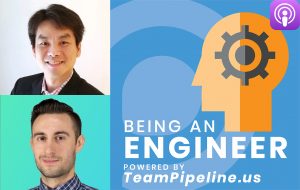
Who is Daniel Kurnianto?
Daniel Kurnianto‘s F.A.S.T. Liquid Handling Automation Positive Displacement Pipette Tips device captivated me and prompted me to invite him to the podcast. We also discussed how he was able to turn his great ideas into real-world practices while maintaining the highest standards of quality
Meanwhile, Daniel is the Product Manager Owner and R&D Senior Mechanical Design Engineer at lab equipment & automation.
Listen to this episode, after that you may also watch his automated Displacing Pipette Tip device here.
Interviewed by Rafael Testai.
EXPAND TO VIEW EPISODE TRANSCRIPTION
SUMMARY KEYWORDS
pipetting, pipette tips, automation, design, 3d printers, automated, customer, learn, mechanisms, pressure, question, podcast, filaments, laboratory, positive displacement, volume, precision, engineer, torque, idea
SPEAKERS
Aaron Moncur, Rafael Testai, Presenter, Daniel Kurnianto
Aaron Moncur 00:00
Hey everyone, we’re looking to add a new member to our engineering team. Ideally, we’re looking for a Senior Level Mechanical Design Engineer in the Phoenix area, who has experienced designing custom automated machines, equipment and test fixtures. Also, having working experience with controls and system integration is a plus. If you’d like to apply or suggest Someone, please email us at info at testfixturedesign.com.
Presenter 00:32
The Being an Engineer Podcast is a repository for industry knowledge and a tool through which engineers learn about and connect with relevant companies, technologies, people, resources and opportunities. Enjoy the show.
Rafael Testai 01:01
All right, everyone, welcome to the Being an Engineer Podcast, we have Daniel Kurnianto. Did I say correctly?
Daniel Kurnianto 01:08
Yes, that’s correct.
Rafael Testai 01:09
All right. Daniel is a technical product Manager, owner, R&D senior mechanical design engineer, lab automations for robots, microfloyd at Biotech. I’m sure I chopped that up. But he’s gonna correct me here in a second. But the interesting part is that I found him on LinkedIn, because he posted a video that really captivated me, it was, pipettes, pipette transferring liquids. He automated that process into what seemed to be a robot. And many times the pipette tip has to be discarded when pipetting in a laboratory setting. And just automating this whole process really caught my attention because I used to work in a laboratory. After I got my genetics degree, and now I’m doing engineering. So Daniel, could you please correct me with everything that I said? Did I say it correctly?
Daniel Kurnianto 02:02
Yeah, I guess you mentioned everything correctly. So it’s robotics. It’s a consumable bass automation. So this, we call it liquid handling is basically handling liquids, samples. And the very unique part of this system is we use positive displacement pipette tips. most typical hand pipettors is using what we call air displacement. So it’s basically the most different between two it’s like, one is using solid plungers, just like a piston bass. The other one using air to create aspirate, and suspension, basically create vacuum and pressure. The most critical part is like with the positive displacement, pipette tapes, we are able to control the volume, precision really, really high, compare the air displacement, again, because like air is compressible, while the positive displacement plungers is solid. So it’s just like, way better, in terms of precision.
Rafael Testai 03:25
So also, thank you for explaining that in detail and contrasting how it’s different from the other technologies. Question out of all the specialties that you could have gone into as an engineer, what caught your interest about lab equipment specifically?
Daniel Kurnianto 03:40
Alright. I will start with my personality. So I consider myself a lazy person. So I do not like doing things repetitive, actions. And when I got the first job in the United States, luckily, I work on this a Biotech company. And what we do is automate all of those repetitive workflow. And this is just like, perfect match, I call it a blessing. Because like, I mean, I just get to a job that I really laugh really match to my personality. And when I found something that can be automate or can be. Let’s say I can build a system that can re place those repetitive actions. I will just do it because, again, I love mechanism. I love engineering. I will build stuff and then After that, when when it’s work, I can watch movie and mostly with my family. Yeah, like, hey, why not? Right?
Rafael Testai 05:14
That’s that’s the quote of the podcast right there. After automated, I watch movies. Yep. That makes a lot of sense. And I think what you said resonated with me. As I mentioned before I graduate degree in genetics, and I was doing laboratory work, a lot of pipetting back and forth. And it just to drive me crazy, like, you have these thoughts in your head, like, I didn’t go to school, I don’t know always know, just to be in a lab pipetting stuff. And I came across somebody like you, if this stuff that you invented, was around, maybe it was but out of my laboratory were heard about it back then. And I didn’t have the pipette so much, maybe I will still be doing genetics. Who knows? My mother who may be listening to this, she may be thinking, ‘What a shame.’ But I think I actually didn’t even write down as one of the questions I wanted to ask you today. But it just popped up. The fact that I think I did ask the leader of the laboratory if there was any technology to automate this. And this was only like five years ago that was in that lab. And they said that something may exist, but you had to program it. And in the time that it takes you to program and learn how to use the program so it automates it is just not worth it. Like you’re just spending so much time learning how to do it. Can you shed some light on that?
Daniel Kurnianto 06:36
Yep. So yeah, so one key thing that I mean, I work in a company called formula tricks, we really really learned that what you just said is a blocker for us to start selling more automations There are two main users in in our industry one is someone who knows scripting, their title usually a automation engineer. So they they are fairy they enjoy doing scripting basically they don’t mind having a coat for for them to run their automations but then the other side the scientists which is basically the the the person who does the research, they are pretty much not really into coating, and when we are selling our automation to this scientist, scientists, buyer or user, we always found that we need to be able to make our system as easy as possible and no scripting, fairy graphical UI. So the UX need to be very very intuitive, if not either day to not want to use it or they are going to rely on they call those automation engineer and those automation engineer usually PC on men many maintenance PC on installing a new system. And we found that a lot of story that they are frustrated with with their automation that the manager purchase. So for learning from there, me as the product manager on this new we call it the fast of it’s it’s a acronym from flow actual seal tips. So that’s the name of the instrument I’m managing now. Our software is super super a sequence shows like basically, it’s very easy to use. And because like we are aware that we need to make the system easy for the scientists level. So that’s that’s one of the key things that we try to push our software engineering when they are developing they
Rafael Testai 09:16
Can ask you something?
Daniel Kurnianto 09:17
Yes, of course.
Rafael Testai 09:18
How do you know when your software is easy to use? Because it may be easy to use to you that you made it you’ve been creating who gives you the feedback that yes, it’s easy to use?
Daniel Kurnianto 09:27
So, when since since formatting has been in the industry a lot we have a previous product right. So we built a lot of consumer consumer lists. From there we usually talk to them, usually the one who local to us. We are in Bedford mass. So we are really close to Boston Gambit Sommerfield. We just basically the Silicon Valley for biotechs, so we have a lot of customer there. So we usually have a discussion with them, hey, we have this idea, what do you think and then from those, we bring it home, I mean, in the office, and then we brainstorm. And then we come up with some solution. Until basically, until we come up with a idea of the software, I asked my team, my UX designer, basically, to come up with a prototype mock up, level is not functioning, it’s more like a, it does look like a software. But when you click it, it does going or doing something specific. This is basically helping us to gauge how easy it is. And then when we have enough of those, we come to them, come to our current customer, show it to them, and then ask them for feedback, and doing those really have you, like, every week. So every two weeks, a couple of them is enough. So up to five of them is enough. We pick and choose from different applications. For from from PCR application from NGS application, from cell application, like, sometimes we do also the chemicals application as well, because like they are having a different approach a different context. So we want to see on many different directions. So we really have fully infall thing, our customer, basically. And then from there we two iterations, we come up with the next mock up until we think that it’s worked for us to start the development. And then we do those UI, start with the UI first, like graphical UI. And then on the back end, we start doing all of the control, right? The logic, the algorithms to do too, for example, like any error recovery, for example. So yeah, so yeah, so it iteration is really key for us. And we really bring up to the real users. That’s I think that’s the key.
Rafael Testai 12:40
Also, I was able to follow everything you said, and I want to share my experience too, because it may give some insight to a listener. I used to have a software company that I started and I sold it, it was called the van key. And what we use was a platform called envision app.com. And it was basically a mock up, like some graphic designs with hotspots that you can click on and it will take you to a next screen. Can you give us or is it possible for you to share what software you use to create these mock ups with hotspots?
Daniel Kurnianto 13:13
Yeah, so we use what we call FIGMA, F-I, I think Q or G, I forgot, FITMA. Let me let me check figma. I think FIGMA, figma.com.
Rafael Testai 13:28
I’m looking at it right now. Okay, cool.
Daniel Kurnianto 13:30
So yeah, so we use this a lot. And then we create those one by one, one page at a time. And then every page, let’s say a pattern, we can create a pattern what happened when we click those button and then go to the next page? And yeah,
Rafael Testai 13:48
So you have someone on your team guys specifically assigned the task to create the graphic design. Is that right?
Daniel Kurnianto 13:53
Correct. Yes.
Rafael Testai 13:55
Okay. Very cool. All right. Next question is my personal interest is in mechanical design engineering, and especially when it comes to making laboratory equipment because it ties into my previous science knowledge. So I’m going to ask you some mechanical design questions. I’ve taught, I’ve talked to several senior mechanical design engineers, and the general consensus seems that the majority, like 51% of them, at least, say that what you learn in school tends to be more of like the theory, but really, when you get your hands on after graduation, it’s when we actually start learning. So for all my students that first of all, do you agree with that?
Daniel Kurnianto 14:34
I okay, so I might be biased, right? I’m like because my background is actually electrical engineering. But I do love mechanicals. At the time. It’s just like there is no a good mechanical engineering school near my my town back then. I was coming from Indonesia. So basically, the closest one is just like electrical engineering. So, but I really enjoy electromechanical. So I learned with mechanical myself until I got the job and then build up experience from there. But in general, I would like to say it does. True, I would like to say I agree, a lot of when I say design, I would like to say this is coming from a creativity instead of something that you learn from the school.
Rafael Testai 15:37
How will you teach yourself mechanical engineering?
Daniel Kurnianto 15:41
Alright, so well, okay. Um, I think if I recall, since very young, I like to break things off, like if, let’s say, if someone, when it’s your birthday, people give you, as a boy, people give you cars or animal tractors or all of those toys that, that somewhat have mechanical linkage, or stuff, pairings. And so I like to take those apart, because I really enjoy and really curious about, like, what, how does this thing work? How does this make turn, all of those things. And that’s, I think that’s really key for me to learn a lot. And then, when I was older, I suppose I like to build things, like I start making my own, I remember, when I was really young, I make my own fish tank from a class I taught real class, like a from pick a piece of glass, cut it myself, measure it, and create some jig and then, clue it with silicon clue, until I make my own cocart. Back then, I don’t have money to buy the engine. So I went to a uphill and then just slimmed down to the hill. With those cocart I cut the steel welding myself, at that time, I have a family relative that own a steel company who does making a lot of things like from heavy tables from stale tail to Windows or all of those sort of pleats, so I got a chance to expose and use those kind of tools they have late, so I make my own pushing and, rod, cut it down myself, learning asking from the machinist, ‘Hey, could you please show me this?’ And then I do it myself, because I really enjoy it. So yeah, so from there, and keep coming until, until you got the sense about how things work.
Rafael Testai 18:25
How did you get people to show you how to machine you just want a machine shop when you ask?
Daniel Kurnianto 18:29
Right? So yeah, well, I mean, at the time, my family I mean, like one of my relatives actually owned those machine shop, basically. And then I went there and then asked one of the machinists one of the friendliest thread of like, ‘Hey, you please show me this?’ And then ’cause like, when when I was young, are they afraid if they are hurting, if I hurt myself, right, like, like, it’s pretty, dangerous things, right? Yeah. So yeah, I mean, I use a spit saw, all of those since young so that’s give me a some exposure. And
Rafael Testai 19:12
That tends to be a trend here on the podcast, everyone says, ‘You need to know how to how to manufacture things.’ So it gives you an advantage.
Daniel Kurnianto 19:21
Oh, yeah. Yeah, I mean, like, even right now when I start getting more and more advance in terms of design, knowing how to manufactures meaning like making parts with the CNC with Swiss late with laser cutters, all of those CNC bending all of those processes, when you know how it works as fundamental understanding, your design is actually very, very rich in a way when when I say very rich, it’s going to be actually going to To fairly simple, simple to make simple to assembling simple to create, simple to fix, simple to test, because you know that things need to be make from all of those directions. So yeah, I mean, I truly believe if you want to be a great designer, you do need to know how to manufacture yourself. I mean, in some point learning, learning from you took books class is good, but no, no, you need, you need to put your hands dirty on it.
Rafael Testai 20:42
Get your hands dirty. That’s another good quote we can get from this. Okay. All right. So I was gonna ask you, given that I gave that introduction about the general consensus about how more senior designers and including yourself now feel like you need to get your hands dirty. about school? What math topics or physics topics do you use most frequently in your quest to design a new scientific devices? And the more specific the better?
Daniel Kurnianto 21:09
Yep. Okay, so let me try to open to recall the design I have on on on the fast the instrument that I manage now. Talk, it’s really a lot, because we are basically moving things around right with we are using stepper motor. And then on the stepper motor, we use pulley and timing belts. From there, we use a lead screw. So we need to know what the torque you need on your system. And then you need to know what the torque produce on the system.
Rafael Testai 21:50
Question. What do you mean by the talk? Like speaking not talk talk? Talk? Okay. Yes. Yeah.
Daniel Kurnianto 21:57
So yeah, torque it is very, I mean, we, we need to be very cautious about that. And then
Rafael Testai 22:06
Calculating torque is number one, correct?
Daniel Kurnianto 22:08
Yep. Okay, the interesting things like we use a lot of simulations, try to calculate the torque on our design or our system.
Rafael Testai 22:24
Do you use SolidWorks for that?
Daniel Kurnianto 22:25
Yep, we do use SolidWorks and some finite element analysis. But then what I found, I don’t know, either, we’re not really able to using it, or basically, the result is not good enough, in my opinion. In the end of the day, we just need to build it, and then measure it with some cage for for let’s say, on this torque, then we use our torque pitch measurements, and then we spin those spindles on on the speed that we think are going to be working area, and then measured those. When when we found on the when we compare to the final analysis. It’s it’s usually really off. So we ended up yeah, I mean, yeah, it’s just interesting, like we we learn, but in the end of the day, we always coming back to let’s just build it and then measure it. Yeah.
Rafael Testai 23:32
I see. Why do you think that happens? Why is there a discrepancy?
Daniel Kurnianto 23:36
Yeah, so I guess friction is one thing that we could not putting on the parameters. I mean, it’s, it’s hard when you have only one axis, right? One, one motions, that could be fairly easy, but when you are talking about, a stack of mechanisms, for example, after rotational you go to the lead screw, and after the lead screw, you have RAM, to move left and right or side by side, then that’s getting complicated. And, and it’s just again, we end up just like, okay, rather than spending too much time on the finite elements analysis, we just build it really quick, like, 3D print. It’s or, I know I like to use paper and hot glue if it possible, because like, you can cut really fast you can bending really quick, now we have 3D printers, and then that’s really helpful as well. And then we measured those.
Rafael Testai 24:48
Okay. Perfect. So in terms of math topics, and it sounds like this is a physics topic, calculating torque, any other physics topics that you free frequently utilized in designing these lab medical devices.
Daniel Kurnianto 25:04
Okay, so pressure is sometimes, I guess it depends on the project. But what we also deal a lot with pressure and vacuums, we end up dealing with a lot of a feedback control on those I guess I’m not sure if that answered the questions.
Rafael Testai 25:27
Anyone ejecting the pipette tips, right, the pressure?
Daniel Kurnianto 25:30
Yeah. So So When, when, when we are, this is basically like continuing about those mechanism, when we have a linkage, we end up need to measure about the pressure when we apply to the locking mechanisms to the pipette tips, because we are using a what we call cedro insertion force. If you still remember when you are using the pipette tips on your hand pipettors you have to change it right? You have to force it down. If you still remember that,
Rafael Testai 26:06
That’s right. Yeah, that’s right.
Daniel Kurnianto 26:07
Yep. So what we are doing is actually we use a sero insertion force. Basically, there’s some linkage and and locking mechanisms that grab the the pipette tip sideway. So then basically, when the nozzles going inside the pipette tip is actually have zero force and zero pressure, and then we, we lock those sideways, and then engage. But then what we found is frictions and then compliance, like when pipette tips is polypropylene. And then when we do the locking, we need to know like how much pressure we need to produce. So then we can have, or we can create enough friction to hold the pipette in place.
Rafael Testai 27:09
Makes total sense. And for the listeners, I should have said this before that one a visual of what we’ve been discussing before with a pipette tips. I’m going to include a link to Daniel’s work in the description of the podcast, so that you guys can actually watch a video of the some of the things that he’s created, the automation process of pipetting Alright, we’re gonna take this brief moment to talk about our sponsor, testfixturedesign.com, that’s where you can learn more about how we can help medical device engineering teams who need turnkey custom test fixtures or automated equipment to assemble, inspect, characterize or perform verification or validation testing on their devices. And we’re speaking with Daniel Kurnianto. Alright, I love your last name, did I say that right again?
Daniel Kurnianto 27:56
Yes, you are so right on. Yep. Thank you.
Rafael Testai 27:59
I am actually Argentinian. So it’s not hard for me at all to roll we are. Alright, cool. So and for five minutes? Do you think that you could walk us through how one develops a robot for a laboratory? And let me clarify what I mean by this. I always wondered like, how does that happen? There’s a big medical, or like laboratory company come to you and ask you to automate a process like the pipetting. I what’s the first step? And then what’s the second step? Can you walk us through it?
Daniel Kurnianto 28:30
Yeah. So okay. I mentioned earlier that we already built up some customer lists, right? I mean, so we, we have planned the customer interactions. So a lot of time when we do visit just for anything, right for for just for catching up or for for support or for to some meeting, a lot of time, we ask them, Hey, can you please show us or give us a tour? What you’ve been or what what you up to now and then usually they are very friendly, usually. And then they just like, tell us, okay, right now we are doing this application, this application, and then they show us what they are currently using on their workflow. And this is actually the first moment for us to start thinking like a pope flies up. And then Hey, what do you think, if we can take those process by, like, we make some automation and then from those, the discussion goes on. And usually, they’re really eager to get those process automated because the precision In their on this reality and in this application usually like very very like a big word, they want to be able to repeat their research like today next week or two months, and they need to know that what they they are doing is very, very close between what what they they have been done. So precision is a key word on online automations. So yeah, so from there, then we coming back and have some discussion, brainstorming? Usually we call a couple, like a senior or someone who, who has a lot of exposure or exposure, and then we do a brainstorming meeting. Yeah. And then from there, we come up with some concepts. And we coming back again, let’s say calling those customer and then hey, I think we have some ideas, would you mind to give us some feedback, and then keep going, again, like, iteration is really key. Because we, we feel that we know about what they are doing. But sometimes if we do not engage with them early on, and enough times enough iteration, we learned that we are drifting, and then basically end up with something that they are not really
Rafael Testai 31:39
How often is often enough, once a week?
Daniel Kurnianto 31:42
Well, yeah, so yeah, some sometimes once a week, is depend, like, if the customer really eager, sometimes they even like sending us an email or call a couple days. And then from there until we’ve find that enough, we tell them, ‘Okay, so how about this? Lets us let let us meet in the next week. Because we think that we can come up with some options in couple of days.’ But sometimes when we think that it takes longer than we tell them, ‘okay, this time could be maybe two weeks or can be a month.’ And yeah, it’s depend on the guests depend on the scope. And but when we have any question, we just basically either call them right away, in the morning, or whenever, when, whenever we think we need to know, right away, again, the idea of getting the validation or confirmation? It’s, it’s really worth it. Because like, you don’t want to spend time, but then you doing something not necessary or…
Rafael Testai 32:53
Totally agree. I wonder if is there like a specific person on your team that’s usually assigned to these walkthroughs? And this is like the designated person that’s, I suppose really clever, or really good at having this lightbulb moments? Or really, is it really anyone on your team? Does these tours?
Daniel Kurnianto 33:13
Yeah, so unfortunately, I guess yeah, they are not many on the company. I mean, it does, it does only top up person that could be utilizing those chances, right? I mean, because, like, we’re not always able to go to the customer. Instead, I mean, sometimes the PC or we are PC, so, when we got chance to do those, usually we come with a certain person, we don’t bring up anyone in the company, but certain just some some, some teams that, I guess somewhat able to synthesize the whole pictures that the customer told us or show us and then Apple to like, ‘Hey, I think we can do this way or that way.’
Rafael Testai 34:11
Yeah.
Daniel Kurnianto 34:11
I mean, I can I can come to with my single hands.
Rafael Testai 34:18
Yeah, he said, I want to make sure I understood the I you said, unfortunately, that if I understood correctly, like you would want more of your team members to be able to take these tours, but it sounds like only one or two people can take the call right? You have to report back to your team and explain is that what happens?
Daniel Kurnianto 34:35
Yeah, so I actually want what I what I’m trying to say is we learn that only couple people that were the time to bring on on those kind of visits. And like basically it’s it’s it’s a very specific person basically that that ended up able to bring those ideas to do leafing.
Rafael Testai 35:06
Yeah. And I wonder, how does one select that specific person? Because he’s yeah, you’re more than qualified to do those walkthroughs? I would say
Daniel Kurnianto 35:15
Yeah. Yeah. Yeah. So yeah, I mean, like, I guess, from, okay. So when when we do a lot of brainstorming, right in the office, in any occasion, when we have problems when we need to solve something on a current project, so we brought everyone in the teams. So from there we a usually able to tell, like, who’s the guy, who’s the person who actually able to somewhat somehow asking the right questions, or telling the idea that end up working while others is asking something like, why are you asking that. So yeah, so from those, it’s basically we can identify who’s actually going to be useful when when we visit, the customer
Rafael Testai 36:14
That sounds really fun. It sounds like you’re almost a detective walking through a laboratory.
Daniel Kurnianto 36:19
Yeah, yeah. I mean, it’s, I mean, like, I mean, again, like because like, I really enjoy automation, when you are visiting a customer, and they are heavy on lap automations is almost like you are going to I mean, like a kid going to a toy store. It literally like it’s so much cool stuff on what they’re doing here.
Rafael Testai 36:41
And then you mentioned that’s a good analogy. And then you mentioned that when, let me see, I wonder if there’s a feeling that people don’t like to be sold. They say that all the time. So how does want to craft the question? Hey, have you thought about automating this process? Without the person listening to that question, feeling like you’re trying to sell them and then getting defensive?
Daniel Kurnianto 37:04
Oh, you know what, actually… interesting. I now I was thinking I never get those? Uh, what do you call never get those feelings?
Rafael Testai 37:19
Yeah. Yeah,
Daniel Kurnianto 37:21
Right. Right. I guess it’s really deep. I’m like, Oh, maybe this is relate with when you are genuinely want to help them? Right. I mean, like, because, like, the idea you want to present is something that is going to be very useful for them. It’s very very… Like, I mean, like, in the end of the day, if they don’t want if they do not want it on, they’re not get so fine. I mean, but but usually when we brought up a very good idea, and they can see it, they will actually the one who chased us like when you are going to finish it, when you are going to turn where it I want to see it. What is the update, something like that actually.
Rafael Testai 38:07
Sounds like a great field to be in for job security. Right? They say one automation after another, right?
Daniel Kurnianto 38:12
Yep. Yeah, yeah, I would like to say here, I mean, interestingly, I mean, as an as an engineer, I’m not a scientist, but as an engineer, what what I see what the scientists doing? It’s a lot of repetative because like, they try to synthesize some chemical, some reactions, and then they need to try it, right? They, they try with, let’s say if they have one specific volume sample, and they distribute those into smaller, and then they try let’s say How about what what happened if I mix with this buffer, for example, are mixed with different catalysts, let’s say and then they in the end of the day, they need to repeat those a lot of times with different kinds of mix ratios, speach, some time temperatures, all of those things. So meaning, when they are able to automate that for them is actually a no brainer, basically, and as you know, most of biotech, they have money. And when they can see the ROI, the return of investment, they will just like literally like they keep asking, for example, this, the fast the device that I’m working now, every time I show it to the customer tastes like Whoa, I want this. When are you able to sell it to us, it’s always those. So we just in the end of the day, the sales team like keep chasing me, Daniel, when the fast is ready, I need to make money here. I mean, I mean, it’s a fun, somewhat stressful, but it’s it’s a good problem, right? I mean, because like what you are making is basically helping other people and, it’s everyone happy.
Rafael Testai 40:21
Sure thing, in your LinkedIn bio, which I really like, LinkedIn biography, you mentioned high precision mechanism design, it’s one of the things you do. So could you first define what you mean by high precision, and then perhaps tell us a little bit more about what that entails?
Daniel Kurnianto 40:37
Yeah. So this is more specific to what I’ve been doing on on liquid handling robotic or life automation on the liquid handler. So I believe I mentioned the word that precision is, is a big word for laboratory instruments. And then in, in this liquid handling, I deal with a micron microliters volume range. So then on those, everything has to be fairly fairly precise. We are handling the 96 pipette tips, meaning like all of those 96 pipette tip, let’s say if there’s somewhere dispensing or aspirate one micro right across those 96 all of those all of those pipette tips need to be up to 5% CV, so CV is coefficient variations. So, so, every single volume on those pipe 96 pipette tip need to be super, super precise
Rafael Testai 41:58
Needs to be within what percent what percentage you said?
Daniel Kurnianto 42:00
Five percent
Rafael Testai 42:01
5% pressure?
Daniel Kurnianto 42:03
CV. So, CV is like, the terminology we are using when, when we are talking about the performance of the positions.
Rafael Testai 42:15
So, coefficient of variance needs to be within five, in what sense? Yeah, percent is 5% in terms of like the force that the pipette tip is rejecting the vacuum
Daniel Kurnianto 42:26
It’s the volume so we always…
Rafael Testai 42:29
Yeah.
Daniel Kurnianto 42:29
We always focus on when you are spirit, let’s say one microliters samples, and then when you compare those across 96 steps, so all of those variants need to be under 5% sci fi and and when you are dealing with a fairly low volume stuff mix with what we call liquid class, I know you’re liquid, some some sample is high viscous, some sample has a fairly low surface tension, some some sample has a very easy to evaporate like volatiles, all of those when combined with a fairly small volume, it’s just hard and then the mechanism need to be very precise like fairly tight tolerance across those 96 the pipette tip alone on the design need to be fairly, like fairly tight tolerance and and with this is basically require us to come up with a fairy nice design that able to manage all of those
Rafael Testai 43:45
They will manage all of those?
Daniel Kurnianto 43:47
Yep,
Rafael Testai 43:47
Okay. Yeah, I wonder as you know, different mechanical design engineers listen to this podcast, how is what they do like bringing inventions to the world different from what you do with this level of precision? What would like a regular mechanical design engineer have to learn in order to be able to deliver products like you deliver with that coefficient of variance so low?
Daniel Kurnianto 44:13
So, let me think the in some point, when you are dealing with a so… Okay, how about this? Precision in the end of the day is a I call it rests resolution right meaning like how much smaller units either motion, displacements, pressure, what else? temperatures, what else? If you’re able to took to design your system to have the finer resolutions, then you are already win half of the pedals. So now the problem is to have those on the mechanisms. We, we, we need, we need to come up with some plan, like, what is the range of the resolutions you need to go? Right. And and then for example for for if I bring it back to the aspirate and dispense the liquid handling. So, if we are, if we need to deal with 5% sci fi, we know the diameters of the pipette tips. So, we know with one micron displacement, we’ll come up with, I don’t know, let’s say I don’t know 10 nanometers right. So, then you know what is the precision level or the resolution level of your mechanisms that you need to design? So, from those understanding, you can go through with solutions. For example, if you are very, very rafting, if you are dealing with 100 micron precision precisions, then you can come up with a simple one like timing belt TT2 timing belt fashion, will be good enough to handle those suppression because their backlash, their displacement, their error is is somewhat around 100 microns. But then when you need something more or finer than that, then then you need to come up with some mechanisms add for example, a ball screw lid screw, if that’s still not enough, then you need to combine those with i don’t know, one idea I have in mind now is like using a RAM, wedges linkage. That’s not the thing. So
Rafael Testai 47:01
Alright, for sure. So as we wind down here, I want to ask you the final question. And it looks like you’re an entrepreneur of two different websites. One website looks like you’re a foodie, about food you have you and your wife have something that you today together you sell Indonesian food, did I say that correctly?
Daniel Kurnianto 47:22
Yeah.
Rafael Testai 47:22
Okay, so yeah. And then the second one, which I want to ask you questions about is dkautomations.com, D as in Derek, and then K automations.com, and that’s going to be in the link in the description below in the podcast if you guys want to check it out. And it looks like you sell a 3D printer. Could you tell us more about your 3D printer and how is different from all the other options in the market?
Daniel Kurnianto 47:46
Yeah. So when when I see 3D printers, I found that okay, so I saw 3D printer is a time machine for me, I mean, as an engineer, when when I need to machine back back to my, my, my personal personality, right? I’m lazy I do not enjoy doing stuff including machining, like when
Rafael Testai 48:15
Including machining
Daniel Kurnianto 48:17
In some world, right and now we have 3D printers. So basically, we 3D printer, again, I can design and then print it, I can watch movie right? Let let the 3D printer works for you. So, but then when when I start using 3D printers, I ended up spent a lot of times tweaking and changing parameters because sometimes they failed. They pop up from the bed. And then basically in the morning, you found that you have those noodles, mess up thinking stringy things is that having a nice parts. So I end up basically a design my own 3D printers. So okay, so this is a delta parallel. So it’s like having three vertical posts, and then it has no factors. And what it’s unique is I have utility utility patents on the way that direct extra motor control. So with the delta 3D printers, you want to have your end effector as light as possible. So in the end of the day, you expect to just to have the hot end and the filaments and then the way I solve the problems for those specific reasons. I move the stepper motors away from the end effector and then have it on the actuators on those 350 called pole actuators. And then I use a unit for southjoin to transfer the torque, and to spin the care, the x tutor care that drive the filament in and out. And, and, and that’s basically what I’m trying to solve, I know, or Tarek extractor, it’s better in terms of managing the the filaments, variants, what I’m trying to claim was with a direct extruder, with Delta mixed with Delta match with Delta, I can move as fast as possible between one point to another points, and then I can control the filaments fairly precise. And that’s helping me to have much higher success sprint, when when I print it, mostly it’s going to be working and I do not need to tweak the parameters, on the slices program.
Rafael Testai 51:28
Very well. All right, thank you for the explanation. It was awesome having you on the podcast. So Daniel, how can our listeners get a hold of you?
Daniel Kurnianto 51:36
So yeah, I guess LinkedIn will be the best. linkedin/danielkurnianto. My full names. And yeah, I mean, I’m, I’m trying to be active on the LinkedIn, posting a few videos, one every week. Just showing what what the fast can do, mostly about that.
Rafael Testai 52:02
Yeah. Right. Okay, perfect. So for everyone listening, please give our podcast a five star rating. It really helps other people find the podcast, and until next time.
Aaron Moncur 52:17
I’m Aaron Moncur, founder of Pipeline Design & Engineering. If you liked what you heard today, please leave us a positive review. It really helps other people find the show. To learn how your engineering team can leverage our team’s expertise in developing turnkey custom test fixtures, automated equipment and product design, visit us at testfixturedesign.com Thanks for listening.
We hope you enjoyed this episode of the Being an Engineer Podcast.
Help us rank as the #1 engineering podcast on Apple and Spotify by leaving a review for us.
Find us under the category: mechanical engineering podcast on Apple Podcasts.
Being an Engineer podcast is a go-to resource and podcast for engineering students on Spotify, too.
Aaron Moncur and Rafael Testai love hearing from their listeners, so feel free to email us, connect on Facebook, Twitter, Instagram, and subscribe on Apple Podcast and Spotify!
About Being An Engineer
The Being An Engineer podcast is brought to you by Pipeline Design & Engineering. Pipeline partners with medical & other device engineering teams who need turnkey equipment such as cycle test machines, custom test fixtures, automation equipment, assembly jigs, inspection stations and more. You can find us on the web at www.teampipeline.us.
You’ve read this far! Therefore, it’s time to turn your headphones up and listen now to this episode to learn all these. Don’t forget to tell your friends who might like this too!

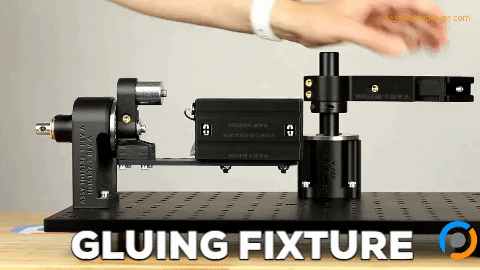
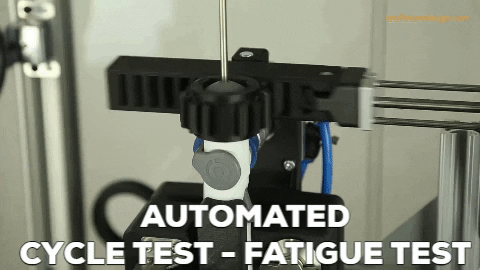
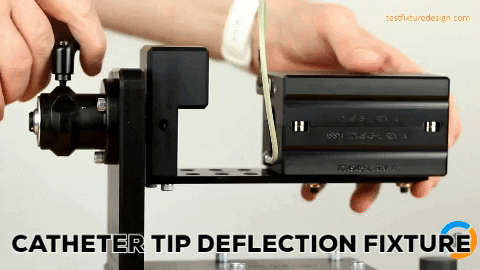
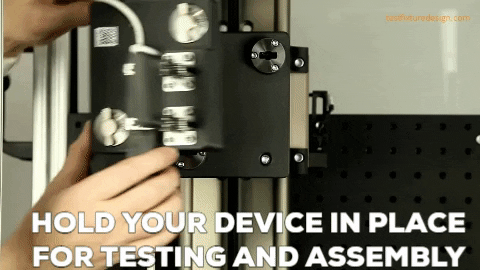
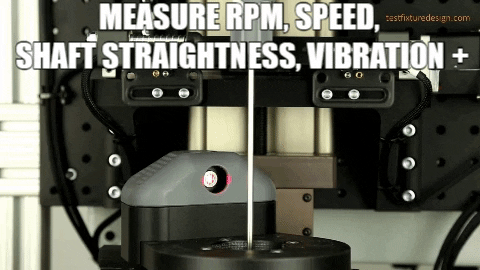
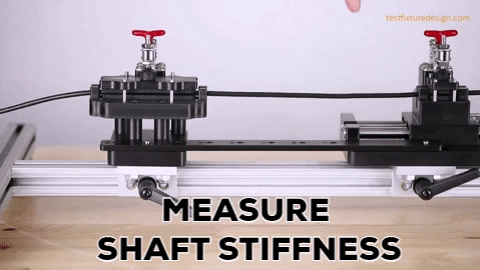
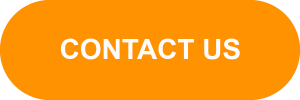

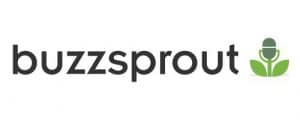



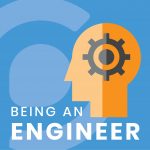
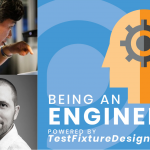
Greetings, I think your site may be having internet browser compatibility issues.
When I look at your website in Safari, it
looks fine however when opening in Internet Explorer, it’s got some overlapping issues.
I merely wanted to give you a quick heads up! Besides
that, great blog!
Hello Olivia, Thank you for bringing this to our attention. We will look into it. And make sure to fix it.